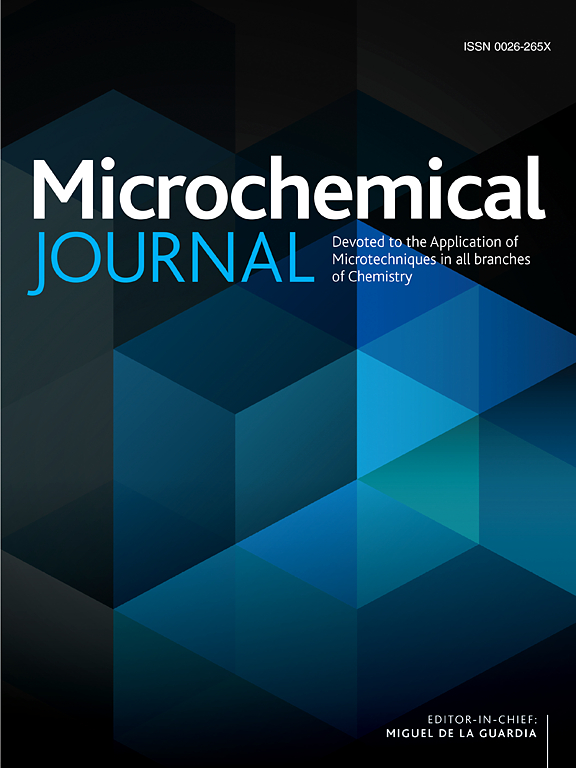用于代谢物可持续提取的深层共晶溶剂综述:理化数据库、提取效率和回收策略
IF 4.9
2区 化学
Q1 CHEMISTRY, ANALYTICAL
引用次数: 0
摘要
传统的提取溶剂,如乙醇、甲醇、丙酮和氯仿,由于其致癌性、生殖毒性和神经毒性,对人类健康和环境构成重大风险。为了解决这些问题,绿色溶剂作为更安全的替代品应运而生,与促进健康和福祉的可持续发展目标(SDG) 3保持一致。本文综述了深共晶溶剂(DES)作为绿色溶剂的发展概况,重点介绍了其理化性质和应用。研究了DES的物理化学特性,特别关注羟基(OH)基团密度、DES组分的摩尔比和烷基链长度如何影响关键参数,如pH、含水量、粘度、密度和极性。此外,这些物理化学性质与DES提取生物活性代谢物的效率之间的关系,包括初级代谢物(即蛋白质,多糖,氨基酸)和次级代谢物(即类黄酮,酚类物质,生物碱),进行了严格的讨论。通过改进DES的性质和优化提取方法,可以进一步扩大其在制药、食品科学和生物化学方面的应用潜力,为更可持续和高效的生物活性化合物提取工艺铺平道路。本文章由计算机程序翻译,如有差异,请以英文原文为准。

A review of deep eutectic solvents for sustainable metabolite extraction: Physicochemical database, extraction efficiency, and recovery strategies
Conventional extraction solvents such as ethanol, methanol, acetone, and chloroform pose significant risks to human health and the environment due to their carcinogenicity, reproductive toxicity, and neurotoxicity. To address these concerns, green solvents have emerged as safer alternatives, aligning with Sustainable Development Goal (SDG) 3, which promotes health and well-being. This review provides an overview of deep eutectic solvents (DES) as promising green solvents, highlighting their physicochemical properties and applications. The physicochemical characteristics of DES are examined, with a particular focus on how hydroxyl (OH) group density, molar ratio of DES constituents, and alkyl chain length influence key parameters such as pH, water content, viscosity, density, and polarity. Moreover, the relationship between these physicochemical properties and the efficiency of DES in extracting bioactive metabolites, including primary (i.e., proteins, polysaccharides, amino acids) and secondary metabolites (i.e., flavonoids, phenolics, alkaloids), is critically discussed. By refining DES properties and optimizing extraction methodologies, their potential can be further expanded for applications in pharmaceuticals, food sciences, and biochemistry, paving the way for more sustainable and efficient bioactive compound extraction processes.
求助全文
通过发布文献求助,成功后即可免费获取论文全文。
去求助
来源期刊

Microchemical Journal
化学-分析化学
CiteScore
8.70
自引率
8.30%
发文量
1131
审稿时长
1.9 months
期刊介绍:
The Microchemical Journal is a peer reviewed journal devoted to all aspects and phases of analytical chemistry and chemical analysis. The Microchemical Journal publishes articles which are at the forefront of modern analytical chemistry and cover innovations in the techniques to the finest possible limits. This includes fundamental aspects, instrumentation, new developments, innovative and novel methods and applications including environmental and clinical field.
Traditional classical analytical methods such as spectrophotometry and titrimetry as well as established instrumentation methods such as flame and graphite furnace atomic absorption spectrometry, gas chromatography, and modified glassy or carbon electrode electrochemical methods will be considered, provided they show significant improvements and novelty compared to the established methods.
 求助内容:
求助内容: 应助结果提醒方式:
应助结果提醒方式:


